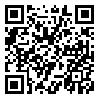Volume 11, Issue 52 (2023)
CFL 2023, 11(52): 97-130 |
Back to browse issues page
Download citation:
BibTeX | RIS | EndNote | Medlars | ProCite | Reference Manager | RefWorks
Send citation to:



BibTeX | RIS | EndNote | Medlars | ProCite | Reference Manager | RefWorks
Send citation to:
Jahandideh A. The Structure and Themes of Balochi Lullabies. CFL 2023; 11 (52) :97-130
URL: http://cfl.modares.ac.ir/article-11-71518-en.html
URL: http://cfl.modares.ac.ir/article-11-71518-en.html
. Associate Professor of Persian Language and Literature, Chabahar Maritime University , jahandideh@cmu.ac.ir
Abstract: (1913 Views)
Lullabies are one of the most important songs in public literature of any nation, which have been handed down from past to the present day. In Balochi, these types of songs are called "Lilo" or "Loli". This article examines Lilo in the Balochi language and introduces these popular poetries before analyzing them from two perspectives of structure and content. The author collected the most popular lullabies while introducing such songs, investigating the meter and form, rhyme and rhythm. Then, the most important themes and functions and their connection with social life, religious concepts, life situation and their beliefs have been investigated. The format of all Lilos is "Traditional Balochi" and in terms of meter, they are often prosodic and close to poetical meter. Some of the themes observed in such songs are: Expressing the wishes of a mother for her child, praying, serenity, reducing anxiety, inspiring the happiness and cuddling of the child, fighting against enemy, assimilating child to national heroes, expressing the brand of baby food, a bridegroom with a heavy dowry, hospitality and praying for childless mothers to have children. The method of investigation in this article is field studies and descriptive-analytical method based on sixty lullabies.
Article Type: پژوهشی اصیل |
Subject:
Public literature of Sistan and Baluchestan
Received: 2023/01/23 | Accepted: 2023/06/30 | Published: 2023/09/22
Received: 2023/01/23 | Accepted: 2023/06/30 | Published: 2023/09/22
Send email to the article author
| Rights and permissions | |
 |
This work is licensed under a Creative Commons Attribution-NonCommercial 4.0 International License. |








